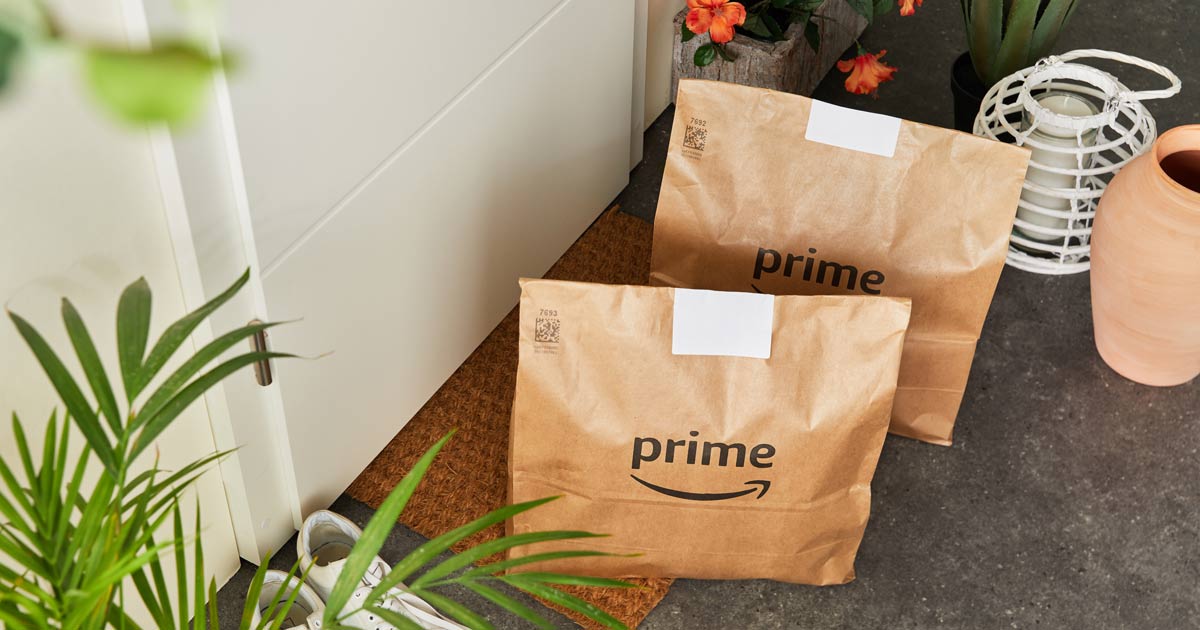Amazon Prime began as an experiment. In 2005, Jeff Bezos’ team wondered if customers would pay an annual fee for faster shipping, a bet that seemed risky in a world where online shopping was still a novelty. That gamble transformed not only Amazon’s fortunes but the expectations of an entire industry. Over the years, Prime has become far more than a shipping service, bundling streaming video, exclusive deals, grocery discounts and a host of other benefits into a single subscription that now counts more than 200 million members worldwide.
Groceries at your doorstep: How Amazon plans to deliver fresh food to 2,300 cities
This week, Amazon gave Prime members something new to look forward to. Fresh food is the newest addition to Amazon’s rapid-delivery lineup. Prime members, the company said Wednesday, can now order everything from avocados and fresh bread to ice cream pints and rotisserie chicken and have them arrive the same day. The move intensifies Amazon’s competition with Walmart+ and Instacart, both of which have also been racing to deliver groceries more quickly. Prime members—who pay $14.99 a month or $139 a year—get the perk free with orders over $25. Non-members can still use the service for a $12.99 fee.
As of Wednesday, shoppers in more than 1,000 U.S. cities, including Phoenix, Orlando, Tampa and Milwaukee, can have perishable groceries delivered to their doorstep the very same day they order them. The company says the service will reach 2,300 cities by year’s end, effectively putting most major metro areas within a few hours of an Amazon grocery drop-off.
Until now, Prime members looking for fresh food deliveries had to shop through Amazon Fresh or Whole Foods Market, and even then, they were asked to pay an extra $9.99 a month for free delivery on orders over $35. Under the new model, that add-on is gone.
Instead, grocery orders will move through Amazon’s same-day delivery network—the same system that already transports books, electronics and household goods to customers in hours. With $100 billion in grocery sales last year through its main app, Amazon has shown that even with uneven ventures like Amazon Fresh, returning to its delivery-first roots could be exactly what the company needs right now.
Behind the scenes, that means groceries won’t be handled exclusively in dedicated Amazon Fresh warehouses or Whole Foods backrooms. Instead, orders will be sourced from a mix of local fulfillment centers, regional distribution hubs and, in some cases, nearby stores that partner with Amazon. Fresh and frozen items will be packed alongside shelf-stable goods in temperature-controlled totes, then routed to delivery drivers already crisscrossing neighborhoods with other Prime orders.
The logistics gap: Why competitors can’t fully replicate the Amazon model
The expansion gives Amazon a sharp competitive edge: Groceries arrive faster, routes are more efficient and Prime becomes the go-to for nearly every household need. Rivals like Instacart and Walmart can’t match this level of integration. Their deliveries often rely on separate stores, regional partners or independent drivers, making it difficult to combine perishable and nonperishable items into one seamless same-day run.
Amazon may be the most visible name in same-day grocery delivery, but the competitive landscape is heating up faster than ever. Across the country, consumers have come to expect groceries delivered in hours, and this convenience is increasingly shaping where people shop and which brands they trust. Instacart has reported a 10.2% jump in transactions this year, while Walmart+ now reaches nearly every U.S. household with a similar same-day service.
Even traditional supermarket giants like Kroger and Target are stepping into the fray, running pilot programs and experimenting with rapid delivery to hold onto customers who might otherwise be drawn to the ease of Amazon or the speed of a specialized delivery platform.
The convenience factor that keeps customers coming back
Decades of instant gratification through digital services have rewired how we think about shopping, so waiting even a day can feel like a delay. Prime conditions consumers to see fast delivery not as a luxury, but as a baseline, creating a sense of convenience that becomes almost addictive. There’s a subtle psychological loop at work here: The quicker an order arrives, the more satisfied we feel, reinforcing loyalty and nudging us to buy more frequently. Over time, this constant reinforcement trains shoppers to prefer retailers who can anticipate their needs instantly, raising the bar for everyone else and turning “speed” into a lethal form of competitive advantage.
The genius of Prime lies in its logistics: fast, reliable and integrated. It’s not just good for shoppers, it’s good for business. Amazon’s shares rose 1.4% Wednesday, even as rivals like Instacart and Walmart took losses. With a $4 billion investment to expand same-day delivery to thousands of rural communities, Amazon is showing that controlling the last mile can be both a customer win and a market-making advantage.
Photo courtesy of Amazon.

